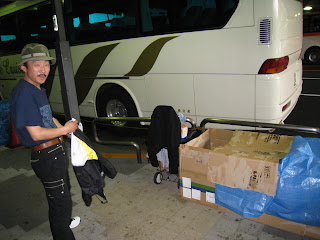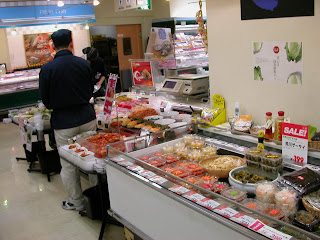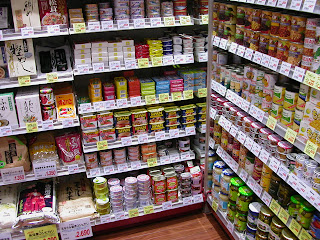The second time now was just as nice, but this time I was able to understand the lecture on zen philosophy that follows the meditation quite well. In this lecture one of the head monks of the monastery would tell us three fundamental wisdoms about human life, which I'd like to share with you.
(1) Good And Evil
He asked us to consider that in fact there is no good and evil, right and wrong in this world and that it is no one but ourselves that make/judge things good/evil or right/wrong.
He gave us some examples to illustrate this proposition. During history things that were believed to be right changed and are now regarded wrong. But what is right or wrong also differs from the view point and circumstances. For example: The Japanese 上士 upper class samurai who beheads a peasant for not showing the right manners, acts according to his construct of right and wrong and thinks he has done the right thing, while of course the peasant and his friends and family morally despise the samurai's deed. The man who steals food from the super market acts evil at a first glance, but regarding the circumstances that his sister is starving and needs food direly, which means he took the burden of becoming a thief upon him for the sake of his sister, suddenly makes the man good.
Because of this truth the monk advised us to be very careful judging a deed or person wrong,evil or right,good. If we keep the fundamental fact in our head that there is no such thing as universal evil/good wrong/right, we are less likely to hastily judge someone and maybe hurting the person.
Now the Buddhist ideal goes farther and tries to get rid of any judging and concepts of good and evil and tries to see things, deeds and persons for just what they are without imposing moral judgment unto them. This consequently leads to the principle of Zen who tells to get rid of all this mental burdens and clear your mind for the transcendent.
(2) Money And Death
He then continued his lecture by asking some people in the audience, what they expect from life and what they would need to be happy. The answers were what he expected and he said that the majority of the Japanese people have the same expectations, which is money first, a good and secure job, a nice house and car and a nice family with children inside.
He then asked if people thus would like to be rich or even envy people a bit who have a lot of money, and again the broad answer was yes.
He finished his introduction by letting the people approve of the thesis: "In today's world you can buy anything with money".
After the introduction he asked a contrary rhetoric questions, if the rich people could buy life? Well they might be able to prolong it a few days or weeks by good medicine and food, but they will die just like anyone else. And they can bear children just like anyone else. There is actually no difference between them and you. So wanting to be in their situation is quite silly, since you already are.
Understanding this truth, we can go further and find that we can be just as happy as they are, or as someone with money, house, car and family is. Because we simply can select what makes us happy. We can select a far away goal like the house and family, but we can also select a nice warm meal or an evening with good friends or a good talk. If we are able to look through this truth, we can be happy whenever we want and with whatever we have and by that, indeed, we will be even more fortunate than the rich people.
Now going further into Buddhist ideals we come to the point where we need nothing to be happy (expect maybe air, food, water and love/friendship). We get rid of anything we don't really need and by this actually free ourselves to accept the whole world.
(3) The Meaning Of Life
The last part of his lecture was about the meaning of life and he promised right on the beginning to answer the question eventually. So I was quite interested and excited to hear it.
First he asked into the audience, who had thought about the question, why she/he was born, why she/he would be in this world before. Surprisingly for me very few people raised there hand (I often thought about this question, and my best answer I could come up with so far, is that we can choose the meaning ourselves and find a meaning that fills us and makes us happy).
Eventually he really gave an answer:
the meaning of why we are born is to live
It sounds pretty simple, but then the best answers are usually the simplest ones. Also if you think about it, it makes a lot of sense. And at least concerning me, that is the best answer I got so far (I am excluding the obvious biological meaning here "to reproduce" here, since we are looking for a deeper meaning than that).
That's it for now, I hope I gave you some thoughts to think about.
mika




























































